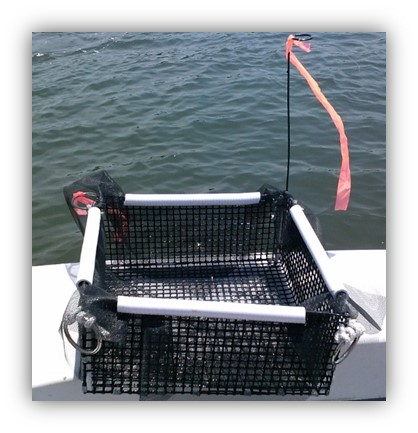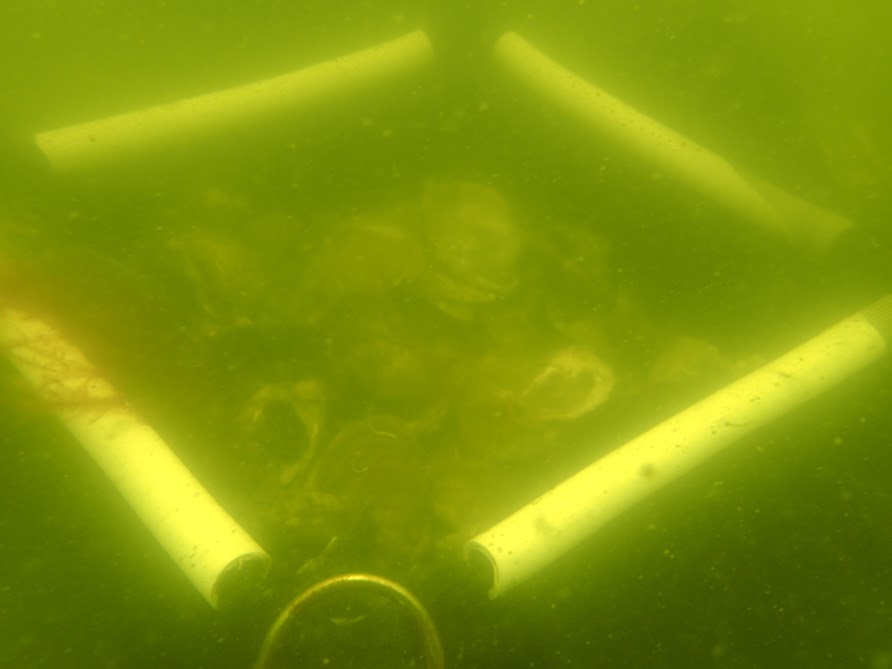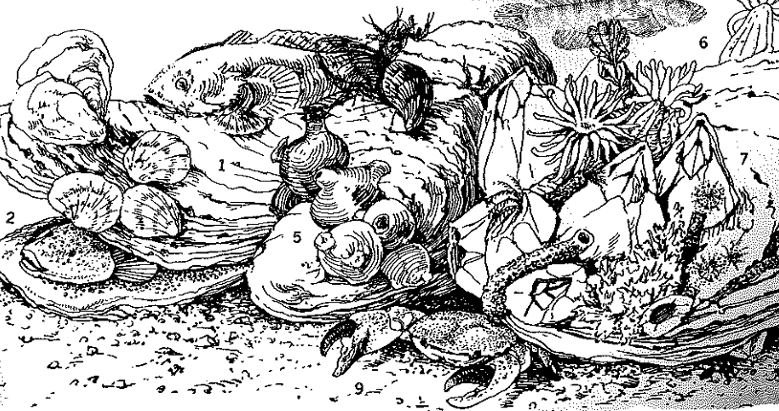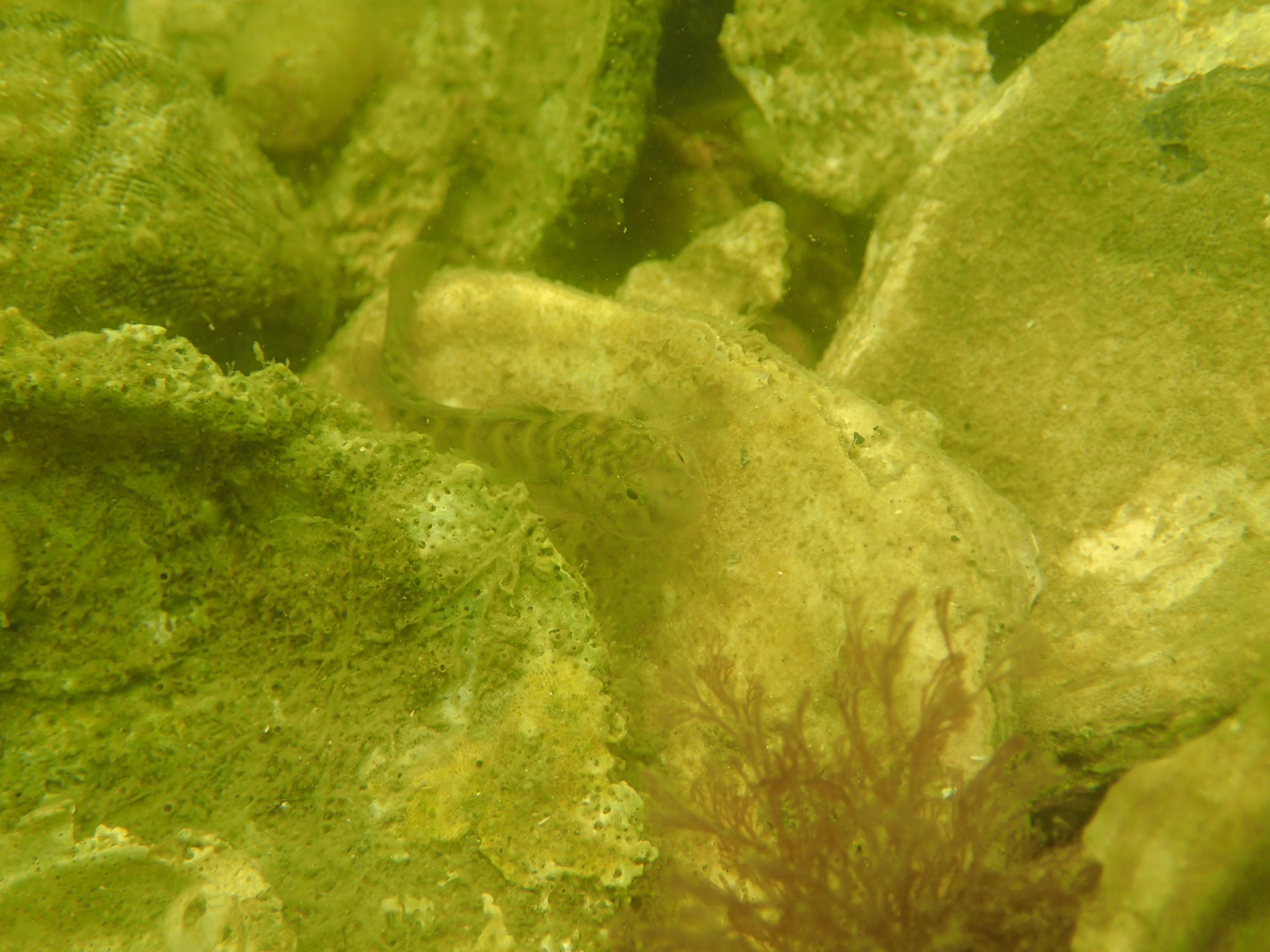Research
Meet a Scientist Hello! My name is, Melissa Karp, and I am a graduate student at the Virginia Institute of Marine Science. My research focuses on quantifying the diversity and abundance of organisms that live on restored oyster reefs and determining the factors which influence how these organisms utilize the reef habitat.
Field
Sampling
Methods
This
work was carried out in four rivers in the
lower Chesapeake Bay (Figure 1) during the summers of 2014 and 2015.
Benthic
settling trays (Figure 2) were imbedded into reefs by SCUBA divers from
the
Virginia Institute of Marine Science and left for 7 weeks after which
time they were retrieved by the divers. Upon retrieval a
measurement of 'rugosity', or surface complexity, was taken using a
small linked chain for each tray. The oyster material was
placed
in large plastic bags and forzen until sorting could occur in the
lab.
Measuring Rugosity: 'Rugosity' is a term to refer to the degree of roughness or complexity of a surface. It is most often measured using the 'chain-link method'. In this method 'rugosity' is taken as ratio of the straight line distance between two points over the surface to the length of a flexible chain when it is drapped over that same surface between the two points.
Lab
Processing
All species collected were
then identified and weighed in the laboratory to provide information
about species
diversity, abundance, and biomass (productivity). Volumes of dead
shell, clumps (two or more live oysters attached together), boxes
(articulated dead oyster shell) and live single
oysters (unclumped oysters) were also measured to provide additional
information about the complexity of the shell material within each
tray.
Results
Initial
results reveal that these restored reefs are important habitat in the
Chesapeake Bay, and are home to a
host a different species. These species' abundances seem to be related
to the
total amount of oyster shell material present. In all 47 different
species were found to inhabitat these restored reefs. See 'Interactive
reef' page for a full list of species.


 Figure 2: Example
of a
benthic sampling
tray that was embeded into each reef. Tray dimensions are 0.122sqm x
0.15m. Image courtesy of Melissa Karp.
Figure 2: Example
of a
benthic sampling
tray that was embeded into each reef. Tray dimensions are 0.122sqm x
0.15m. Image courtesy of Melissa Karp.  Underwater image
of a benthic sampling tray embedded in a reef in the Piankatank river.
Image courtesy of Solomon
Chak.
Underwater image
of a benthic sampling tray embedded in a reef in the Piankatank river.
Image courtesy of Solomon
Chak.




